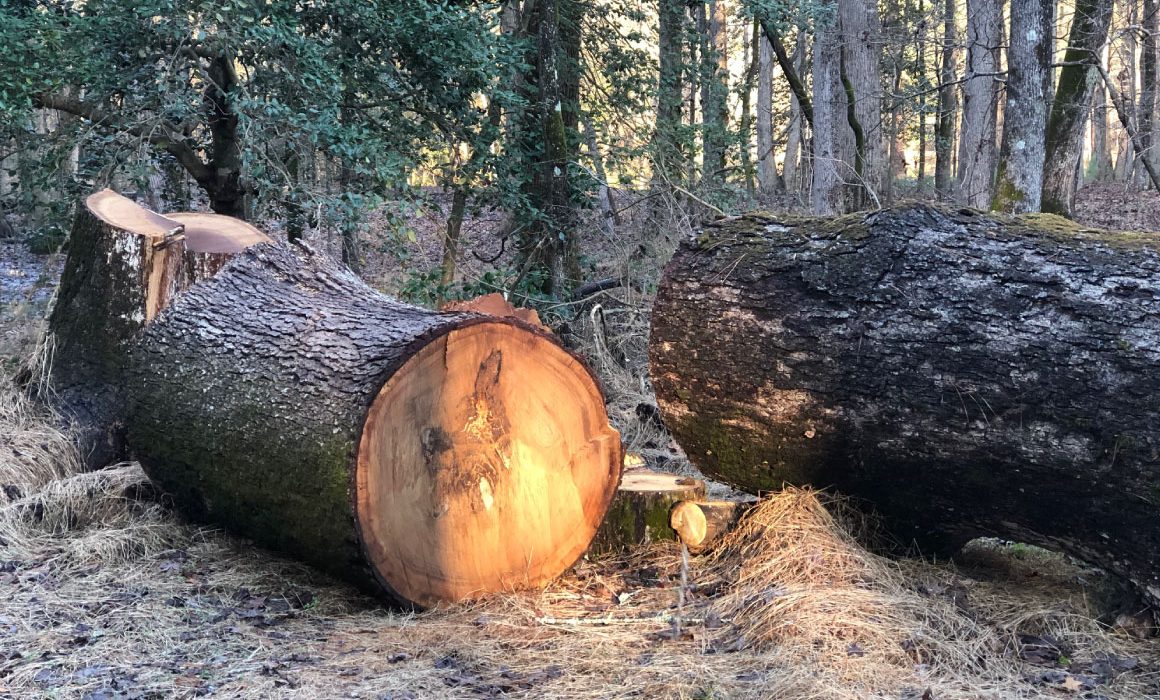
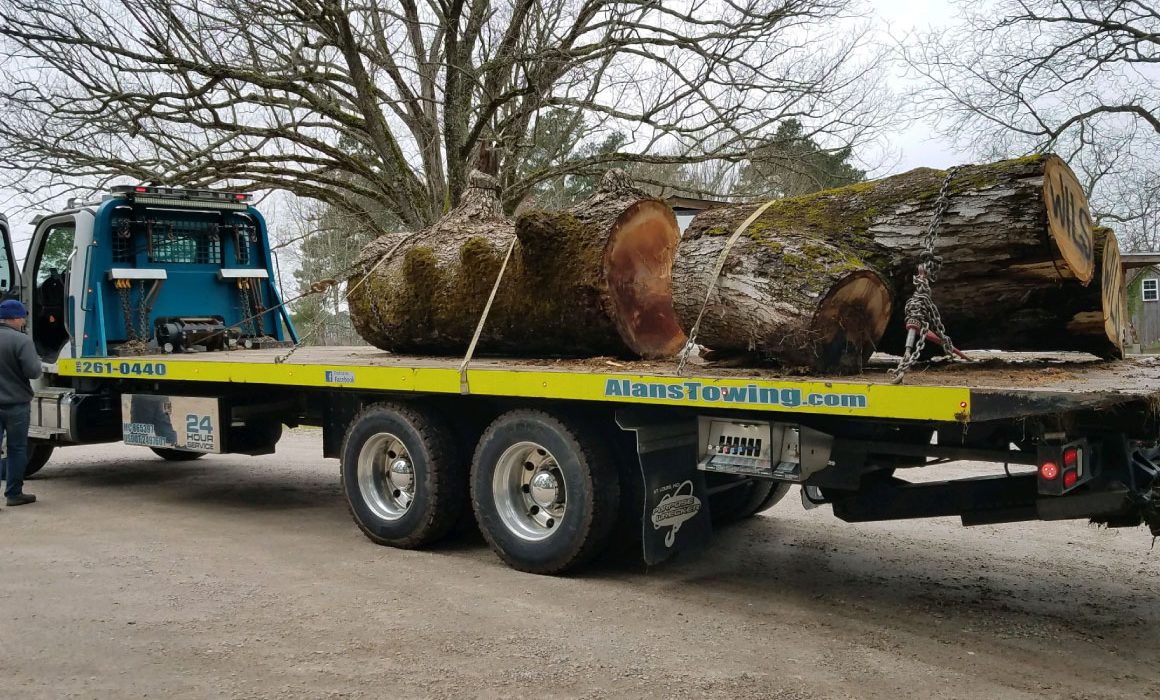
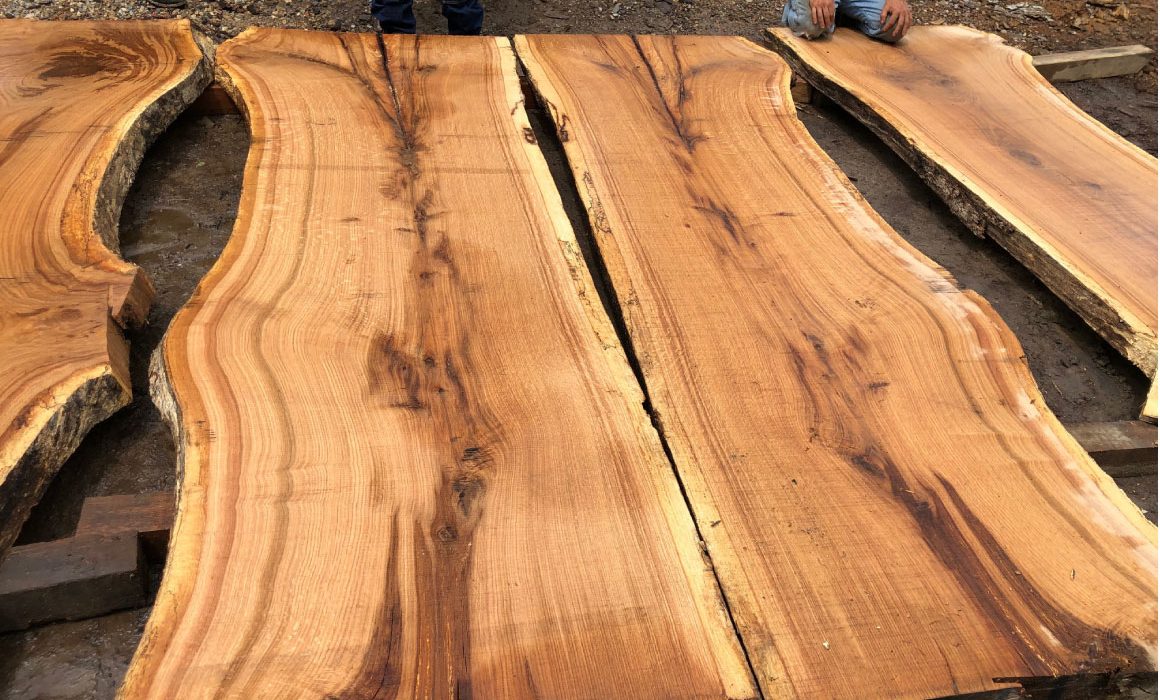
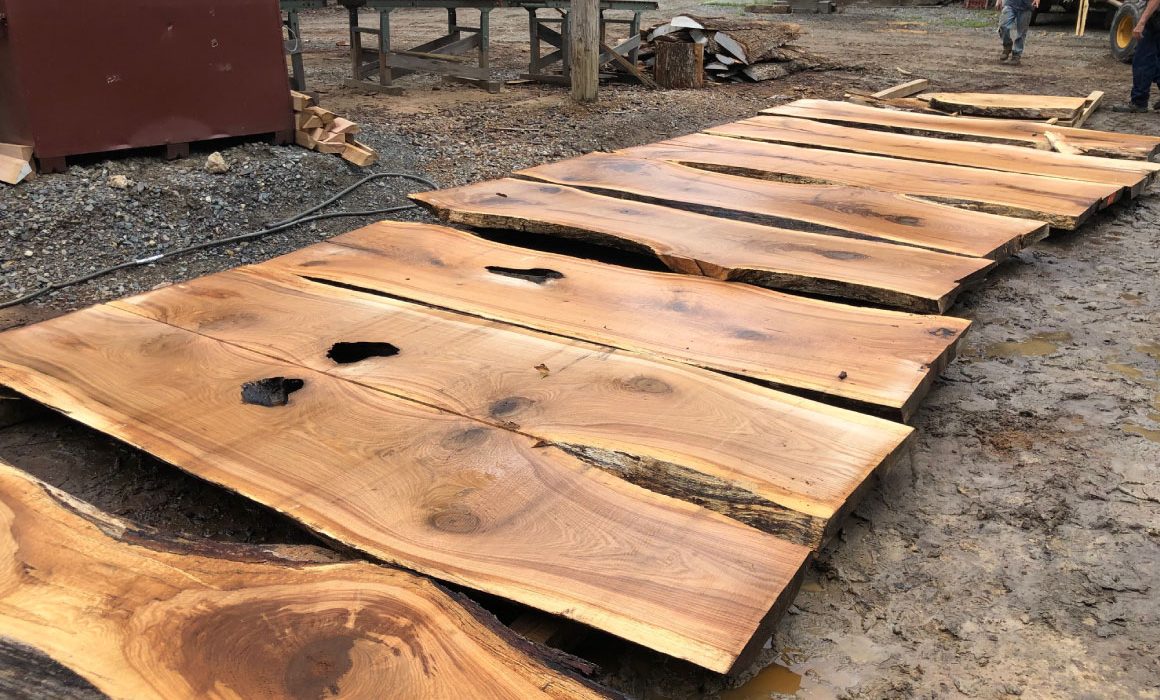
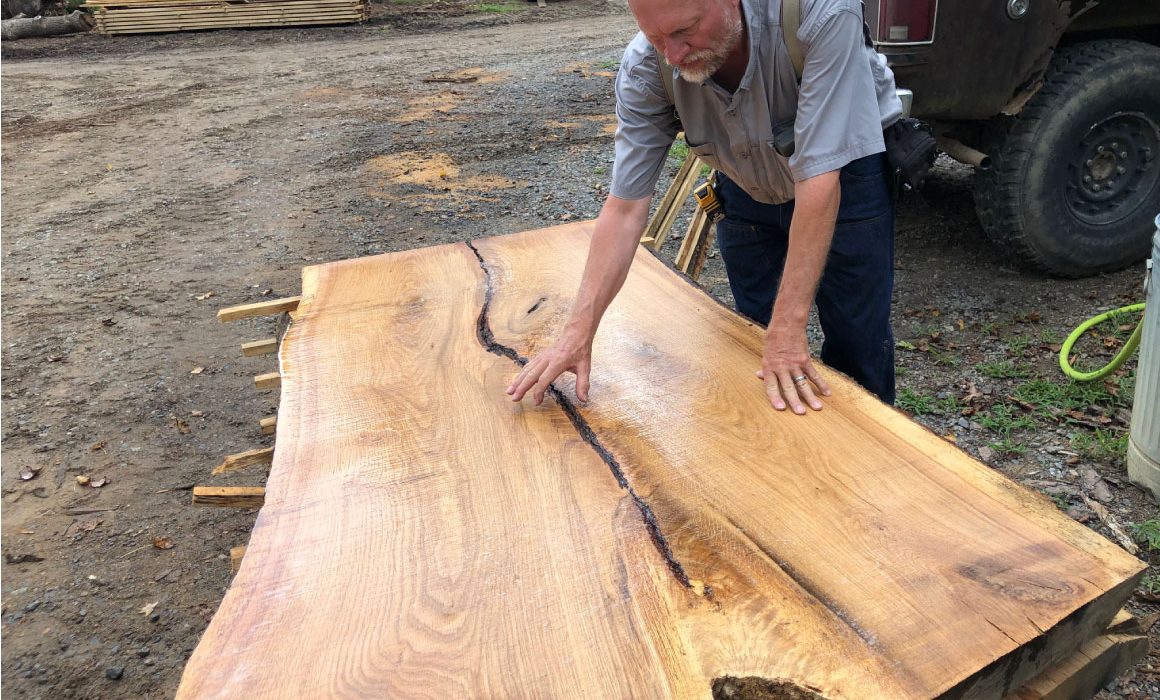
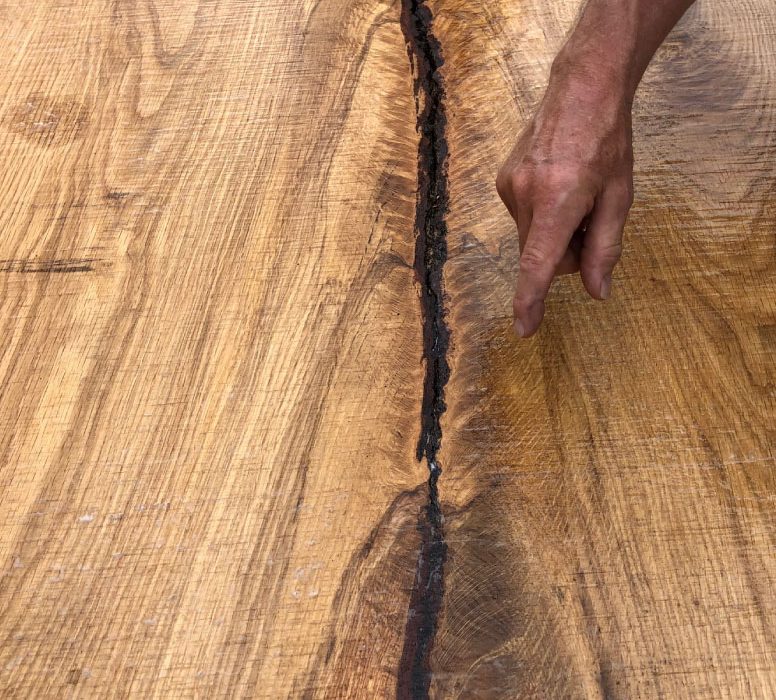
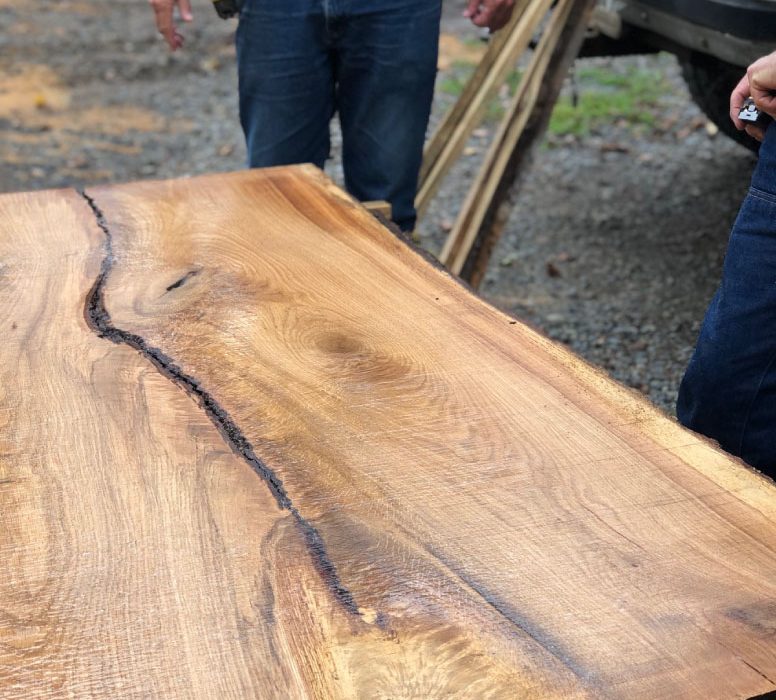



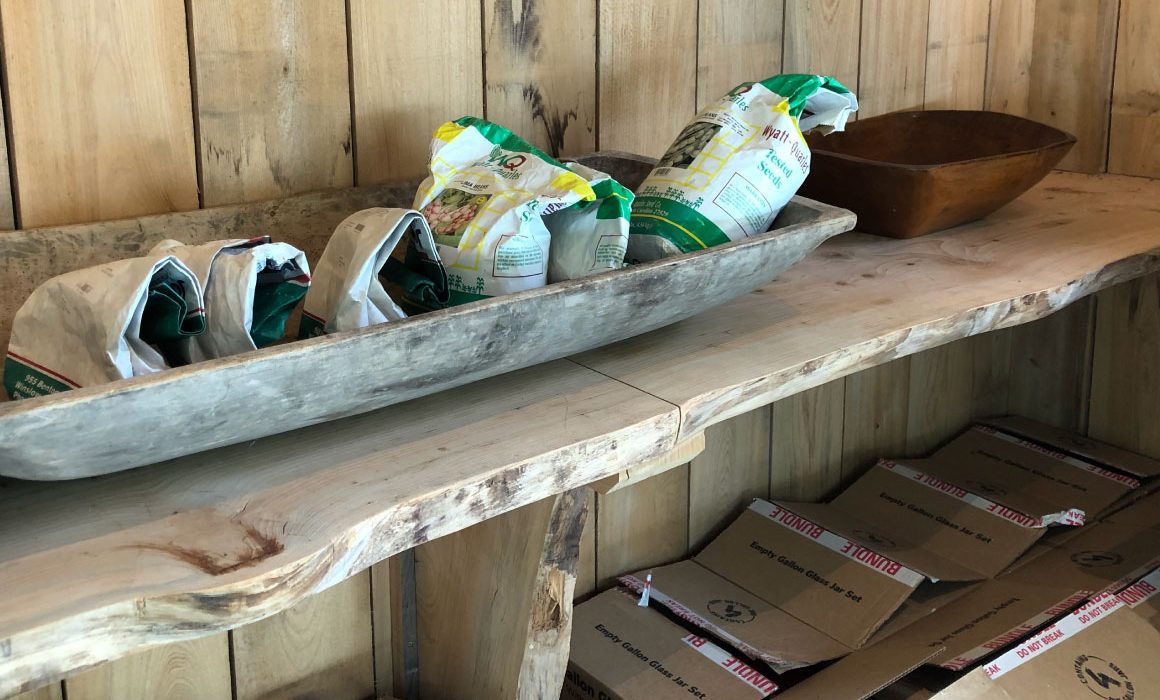
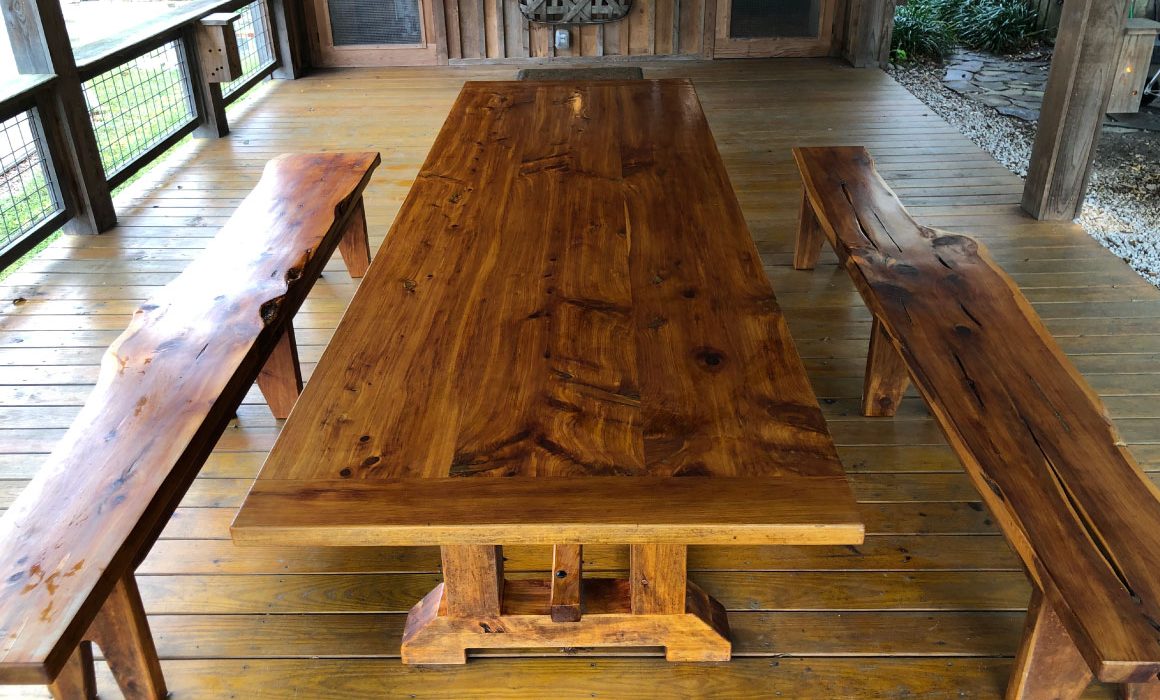
2021 September News
Many years ago I remember my older brother Bryant swinging, by one hand, from an old white oak tree whose lower limbs graced the ground of our farm. Unfortunately, we lost this tree a year ago. She was a magnificent tree, but such is the case with all living things — time will eventually take its toll. One morning before dawn, after three days of rain followed by some significant wind, she gave up the ghost — hitting the ground with a thud that could be heard and felt all the way back up the hill to our little farmhouse.
We waited until January 2021 before we began processing this old tree (see January News). We worked from the upper limbs and branches and progressed to the tree laps and upper trunk. Cutting the upper portion of the tree into small logs that could be split into proper firewood. We saved the enormous lower trunk, being that it was much less forgiving to to be handled by hand for firewood, not to mention its sentimental value, for a more permanent project.
The lower trunk of this oak measured better than 5 ft in width. So it took nothing less than a large rollback wrecker to transport both logs to the sawmill. The closest sawmill that could process logs of this size was in New Hill, NC. This mill is run by a saw miller by the name of Scott Smith. He has the capacity to cut a log up to 6 ft in diameter and up to 50+ ft in length. Scott is considered one of the most, if not the most knowledgeable saw miller on the east coast. Quarter Sawn Oak’s Lumber expertise is in milling large trees, but more importantly salvaging the precious lumber that would otherwise go to waste from a dead or dying tree. In practice, Scott’s saw mill is a very environmentally sustainable mill, and the slabs produced can be used to create anything someone has the slightest inclination to make out of wood.
Our slabs were cut to a thickness of 3+ inches and that was because we want to have the final dried finished slab with a thickness of 2 inches. After being transported back to the farm, we use wood stickering to air dry the slabs under our barn shelter. These slabs will air dry one year for every inch of thickness which will be for about 3 years give or take. Then a slab or slabs, as needed, will be taken to a wood kiln for final sterilization and drying.
We have found good use of wood slabs around the farm. We’ve used finished slabs in the farm kitchen, our retail room, farm table and benches.
At the end of the day anyone can do this. The only limitation being an individual’s pocketbook of sweat equity and or imagination.
Eat a Peach.
Steve